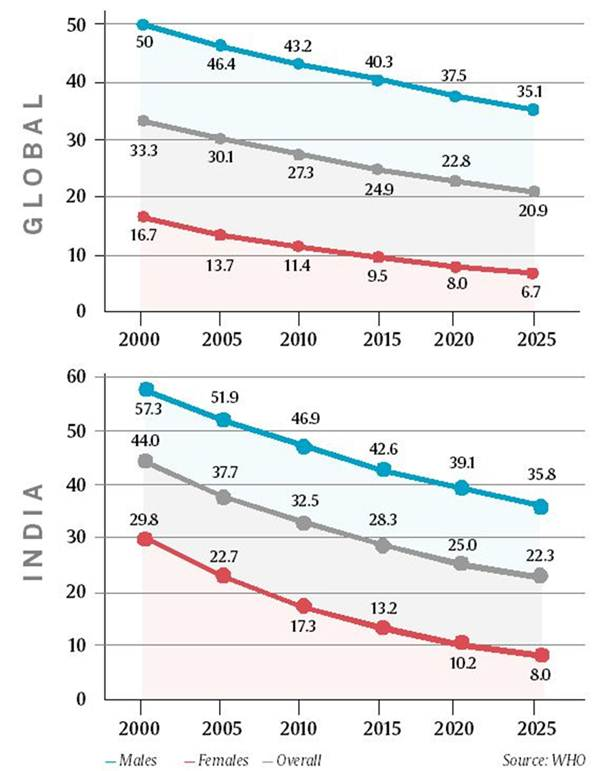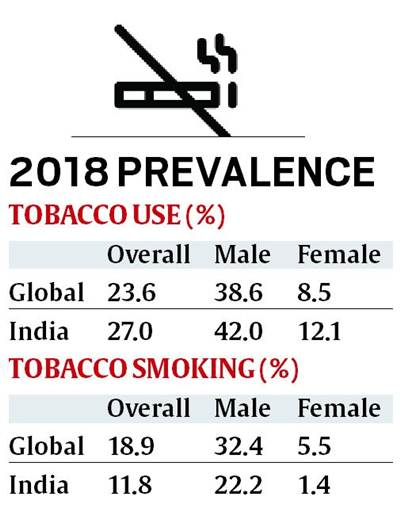International Relations
WHO Report on Global Tobacco Epidemic 2019
- 02 Jan 2020
- 3 min read
Why in News
Recently, the World Health Organization has released a report which projected a powerful shift in the global tobacco epidemic. The shift is reflected in the decline in the overall global tobacco use and the number of people consuming it.
Key Points
- Number of males using tobacco: It rose from 1.050 billion in 2000 to 1.093 billion in 2018, however, the report projects a decline in the number of males using tobacco.
- The number has stopped growing and is projected to decline by more than 1 million (or 1.091 billion) male users by 2020 and 5 million (or 1.087 billion) less by 2025, compared to 2018 levels.
- Global tobacco use: It declined from 1.397 billion in 2000 to 1.337 billion in 2018.
- The fall was largely driven by reductions in the number of females using tobacco products, with their numbers shrinking from 346 million in 2000 to 244 million in 2018, or more than 100 million users.
- Some 60% of countries have been experiencing a decline in tobacco use since 2010.
- Projections: By 2020, there will be 10 million fewer tobacco users compared to 2018 and another 27 million less by 2025, amounting to 1.299 billion.
- Other findings: Approximately 43 million children (aged 13-15) over the world used tobacco in 2018 (14 million girls and 29 million boys).

In Indian Context
- In India, the prevalence of tobacco use (male and female combined) in 2000 was 44% and it is expected to reduce almost by half to 22.3% by 2025.
- Globally, the prevalence was 33.3% in 2000, and is projected to reach 20.9% in 2025.
- Current tobacco use rates in India in 2018 for people aged 15 years and older were higher than global rates among both males and females. However, the rates of tobacco smoking were lower than global rates.
Tobacco Control Provisions
- Governments adopt and implement the tobacco control provisions of the WHO Framework Convention on Tobacco Control (WHO FCTC).
- It is the first international treaty negotiated under the auspices of the WHO.
- It was adopted by the World Health Assembly on 21 May 2003 and entered into force on 27 February 2005.
- It was developed in response to the globalization of the tobacco epidemic and is an evidence-based treaty that reaffirms the right of all people to the highest standard of health.
- The FCTC’s measures to combat tobacco use include:
- Price and tax measures.
- Large, graphic warnings on tobacco packages.
- 100% smoke-free public spaces.
- A ban on tobacco marketing.
- Support for smokers who want to quit.
- Prevention of tobacco industry interference.




